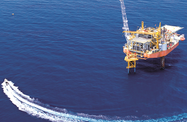Expectations that Papua New Guinea (PNG) will emerge as a major energy supplier for Asia’s growth leaders in the next decade have been heightened by reports of progress on two major liquefied natural gas (LNG) plants currently under development.
In December 2011, US firm Exxon confirmed that its vast $15.7bn plant it is building in the southern highlands is on schedule to start production in 2014. In an end-of-year speech, Exxon’s project manager for the PNG LNG project, Decie Autin, hailed the potential of the plant.
“PNG is a resource-rich nation in the fastest-growing energy market in the world,” Autin said. “We (Exxon) believe that the Asia Pacific demand for LNG will grow in just the next two decades by the equivalent of more than 10 PNG LNG projects.”
Part of that demand will come from China, where the state-run China Petroleum & Chemical Corporation (known as Sinopec) signed a 2m-tonne annual export deal in 2009 for PNG LNG. The agreement will see LNG drawn from the Hides, Angore, Juha, Gobe, Moran and Utubu fields, which are expected to have an overall annual production capacity of 6.6m tonnes when they come online. In addition, Japan’s Tokyo Electric Power will buy 1.8m tonnes of LNG per year from the project for 20 years, and Osaka Gas will buy 1.5m tonnes.
At its peak, PNG LNG — a joint venture between Exxon Mobil, Oil Search, Santos, JX Nippon Oil, and the government — is expected to increase PNG’s real GDP by 25%. A bi-annual report on developing East-Asian economies released by the World Bank last November predicted that the country’s economic growth would be close to 10% in 2011.
A buyer has been found for additional forthcoming production as well. The InterOil Corporation of PNG secured a preliminary sales deal with Chinese company ENN Energy for natural gas from its planned $6bn Gulf LNG project.
InterOil, which is developing its project with Pacific LNG in a joint venture called Liquid Niguini Gas Limited (LNGL), confirmed in December 2011 that under its preliminary agreement with ENN, it will supply 1m to 1.5m tonnes per annum (tpa) of LNG for a period of 15 years. LNGL has already secured a preliminary sales agreement with Gunvor and Noble Energy to supply 1m tpa for a period of 15 years.
“This (ENN deal) confirms continued strong market support for our Gulf Project and PNG,” said Henry Aldorf, the president of Pacific LNG. “ENN is a major player in what is soon to be the world’s largest gas market, serving a broad range of natural gas consumers.”
The project’s Elk-Antelope field will initially have a capacity of 5m tpa, but this is expected to ramp up in stages to 7.6m tpa and 10m tpa, Reuters reported in November.
Canadian firm Talisman Energy said recently it is seeking to offer partnerships in four natural gas licences in the forelands of western PNG. The company said it is seeking to sell part of its stakes in its petroleum prospecting licence (PPL) 235 and PPL 261, both of which are wholly owned, and its petroleum retention licence (PRL) 4 and PRL 21, where it has interests of 50% and 40%, respectively. The firm holds 14 leases in PNG, which hold an estimated 4trn cu feet of gas.
In October, Sydney-based firm New Guinea Energy (NGE) also revealed that it had built a suite of onshore PPLs covering more than 50,000 sq km. The firm said six prospects already contain contingent prospective resources in excess of 600m barrels, while the top-10 leads have an additional 1.8bn barrels, with 1bn barrels of oil and 15trn cu feet of gas reserves discovered in adjacent licences, said NGE.
Despite the growing interest in PNG’s natural-resource wealth, investor confidence has been shaken by unrest at some LNG sites and the island’s relatively poor infrastructure. However, aiming to address domestic and international concerns, the government has established a sovereign wealth fund (SWF) to channel potentially massive future gas revenues towards human development and infrastructure needs, as well as for on-shore and offshore investment.
In January 2012, public enterprises minister, Mekere Morauta, said the government was also developing an independent infrastructure authority that would include a board comprised of government, donors and independent nominees, with “a predictable funding stream from the SWF”.
Provided infrastructure construction progresses in tandem with the development of the country’s growing LNG plants, the country’s investment reputation should continue to rest on a sound, holistic development model that emphasises political stability and long-term growth.

